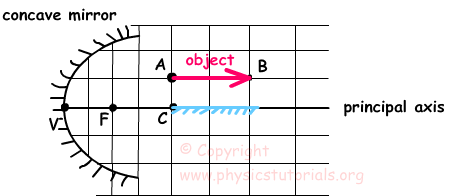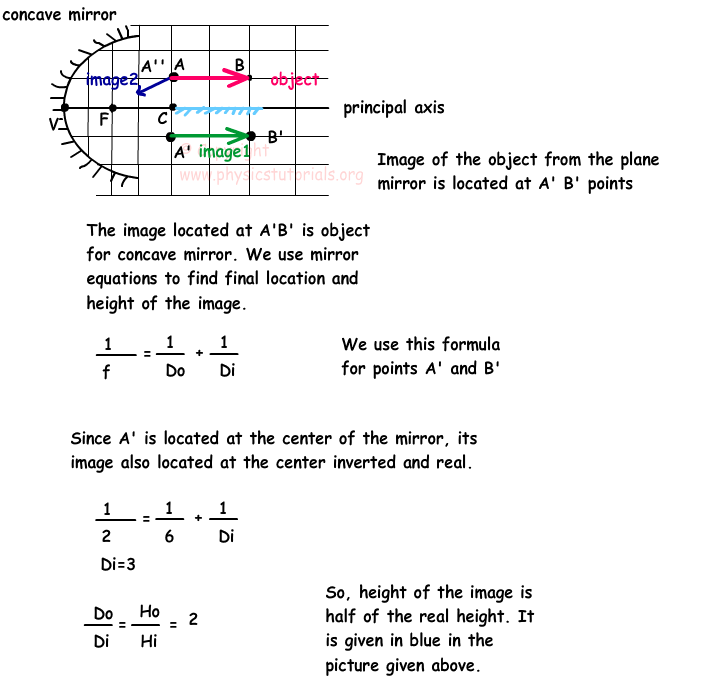Image Formation In Concave Mirrors
While drawing images of the object we benefits from the special rays given above. We use them because we know the paths of them. Let’s start drawing images of the objects located in different parts of the mirror.
- If the object placed at the center of the mirror, image is also formed at center, real, inverted and with the same size as object. To find this image we send two rays from the top of the object. One of them is parallel to the principal axis which passes from the focal point after reflection and second ray passes from the focal point and goes parallel to the principal axis after reflection. The intersection point of these two reflected rays gives us the location of image. As you can see from the picture green one is image of the object.

- If the object placed away from the center of the mirror, image is formed between the focal point and center of the mirror. Properties of mirrors are, real, inverted and reduced in size.
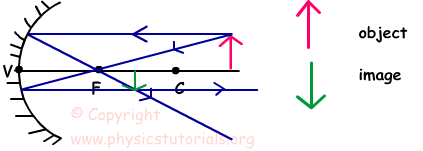
- If the object placed between the focal point and center of the mirror, then image is formed away from the center. Characteristics of the image are; real, inverted and magnified in size.
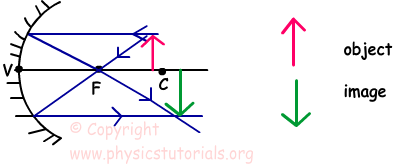
- In this picture object is placed at focal point and as you can see reflected rays goes parallel to each other. In other words, they do not intersect in any point, thus we assume that image is formed at infinity.

- If the object placed between the focal point and vertex then virtual image is formed behind the mirror. Since the rays reflected from the mirror do not intersect, their extensions behind the mirror intersect and virtual image is formed. Image is magnified in size and erect unlike the real images.
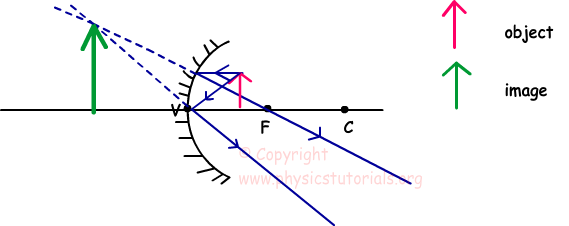 Example: Look at the given picture, If the distance between the object and its image is 120cm, find the focal length of this mirror. Image of the object is behind the mirror, erect and its length is three times larger than the object.
Example: Look at the given picture, If the distance between the object and its image is 120cm, find the focal length of this mirror. Image of the object is behind the mirror, erect and its length is three times larger than the object.
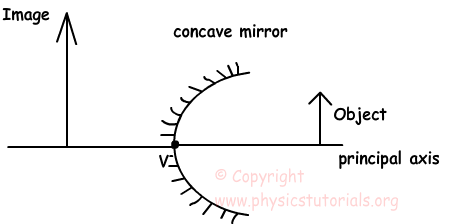
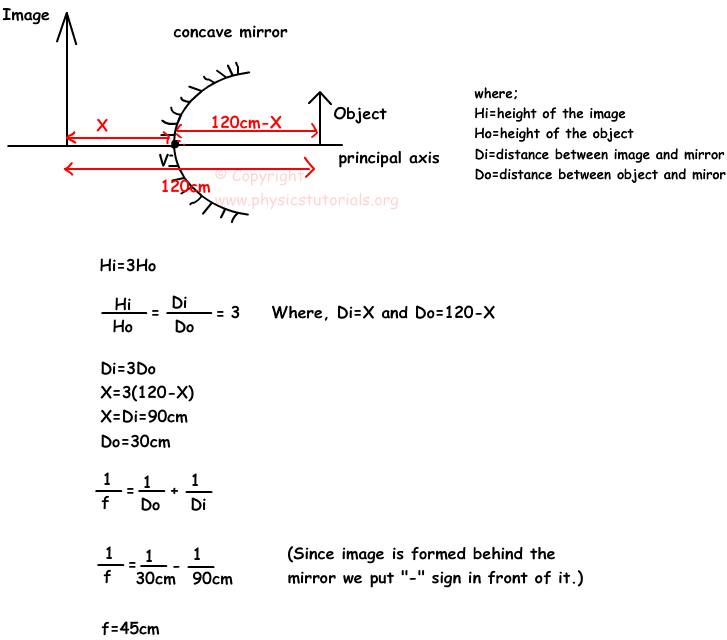 Example: We have an optical system including a concave mirror and a plane mirror in the picture given below. Object is located at point A; its first image is formed in plane mirror and second one is in concave mirror. Find these images of the object.
Example: We have an optical system including a concave mirror and a plane mirror in the picture given below. Object is located at point A; its first image is formed in plane mirror and second one is in concave mirror. Find these images of the object.
